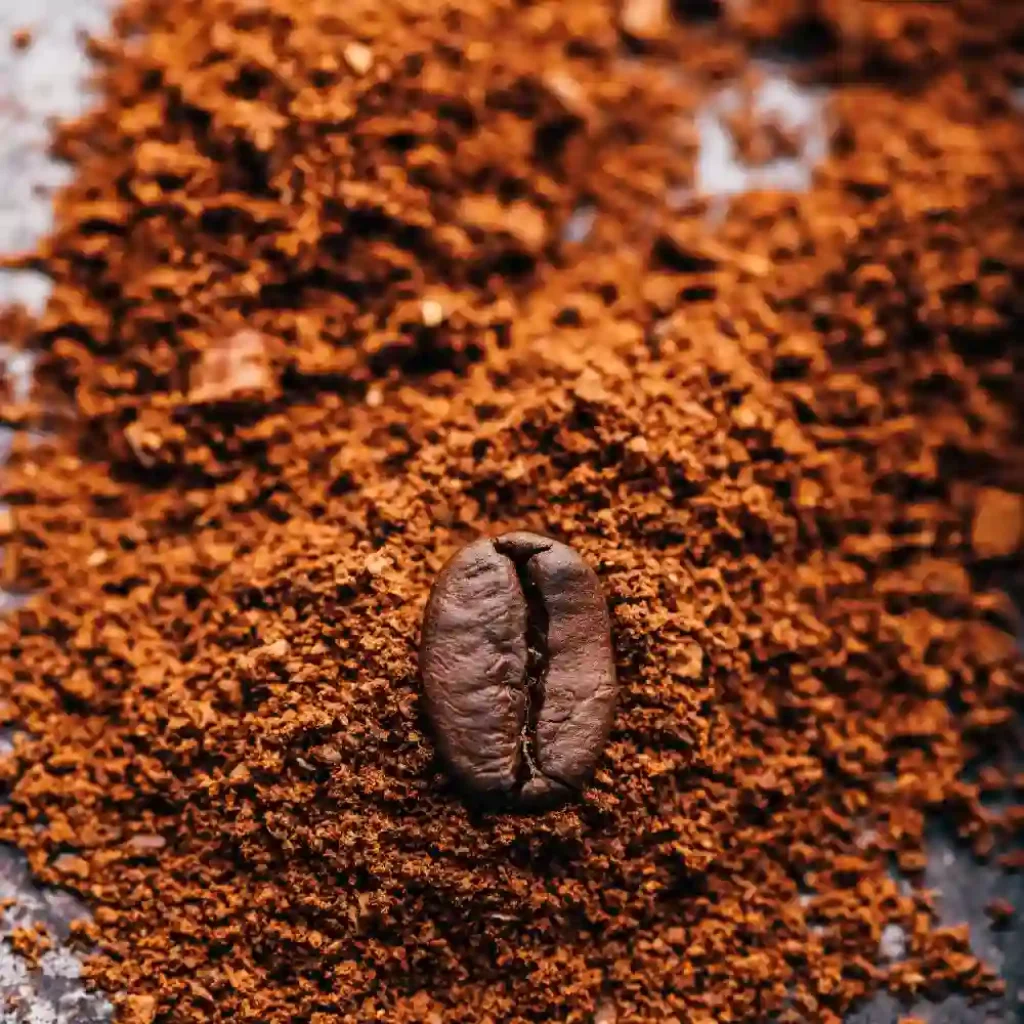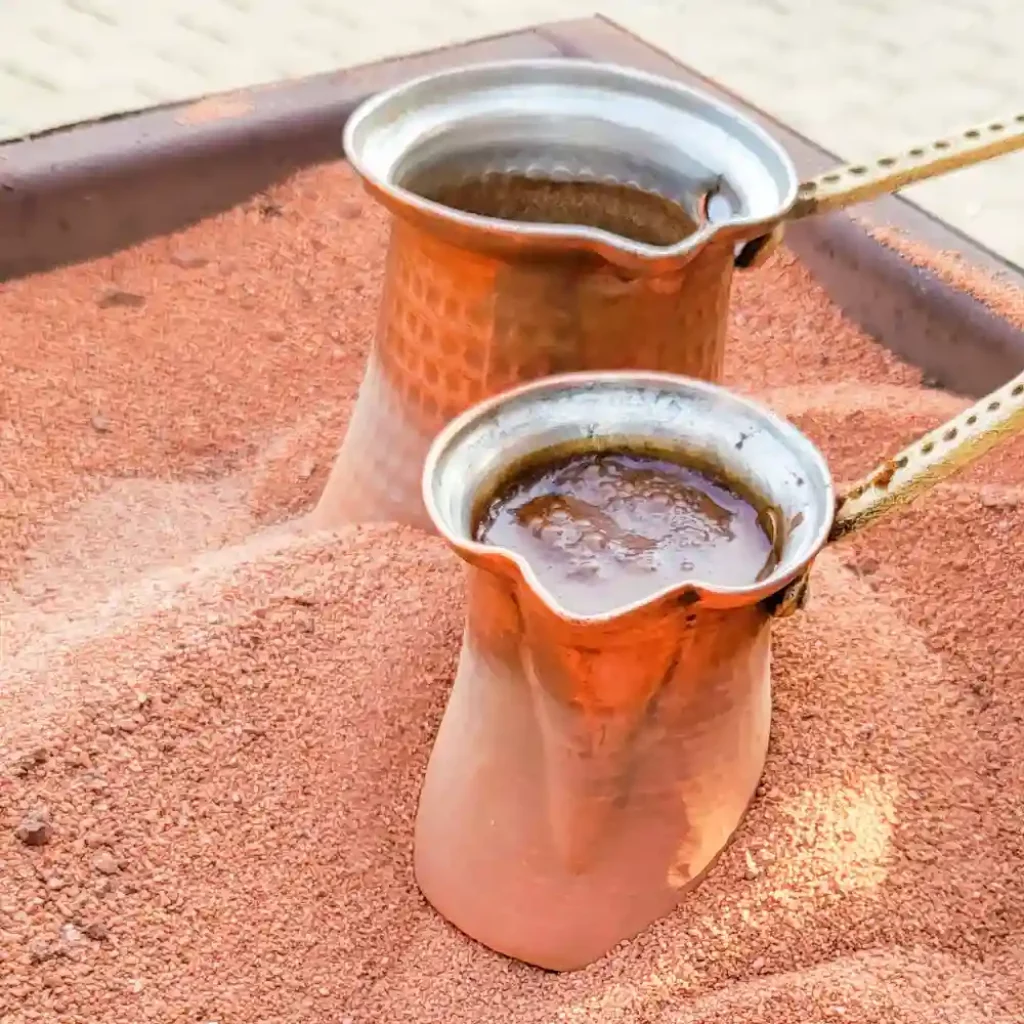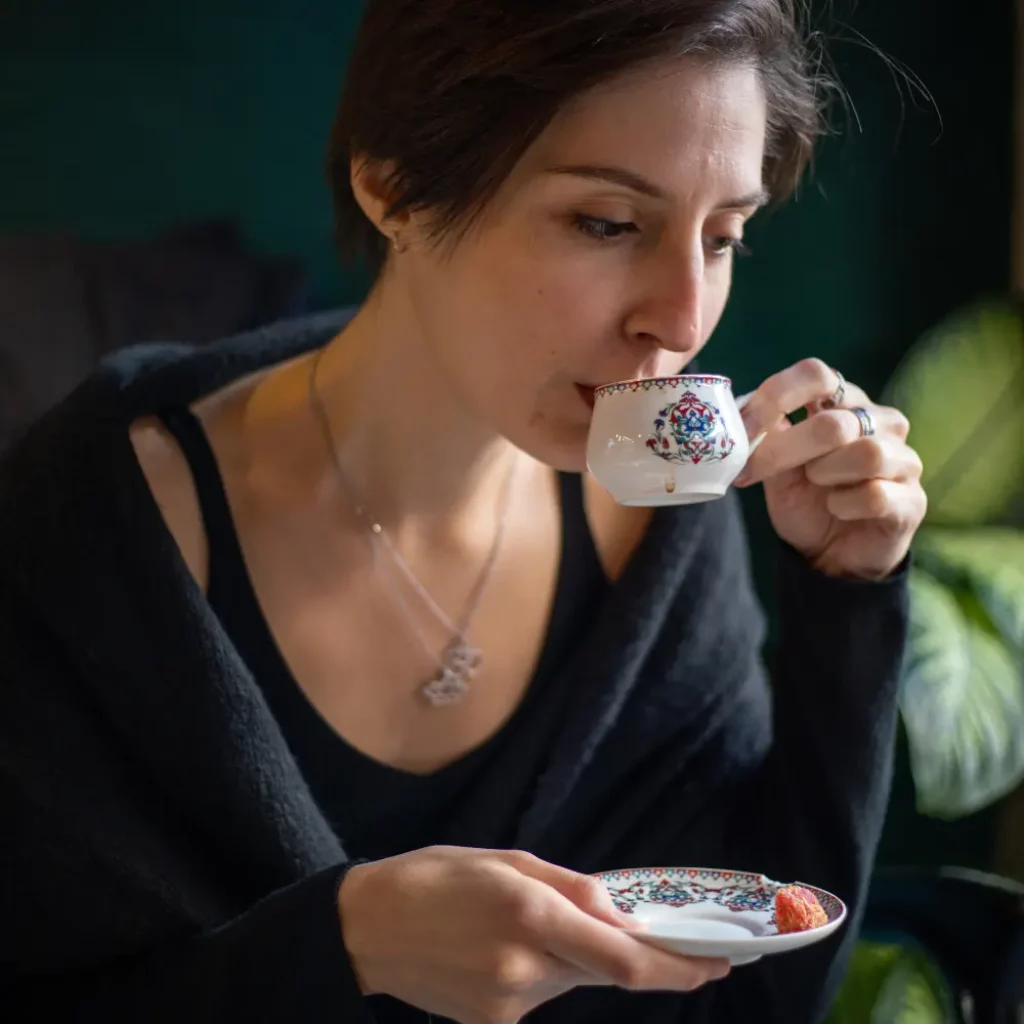There’s an irresistible charm to Turkish coffee, a drink steeped in centuries-old traditions and captivating rituals. It’s more than just a daily caffeine boost; it’s a symbol of hospitality, a conduit for social interaction, and a cherished cultural heritage. Turkish coffee is an art form unto itself – from the selection of beans to the method of preparation in the traditional Turkish coffee pot, each step contributes to the final masterpiece that is served in demitasse cups.
If you’re a coffee aficionado seeking to brew the perfect Turkish coffee at home, you’re in the right place. This comprehensive guide is your ticket to understanding, making, and evaluating your Turkish coffee quality like a seasoned barista.
We’ll walk you through the importance of the unique coffee pot used to make Turkish coffee, the role of demitasse cups in serving, and the art of brewing that has been perfected over centuries. With the knowledge, you’ll gain from this guide; you’ll be able to savor your homemade Turkish coffee and evaluate its quality based on professional standards.
Buckle up, coffee lovers, and get ready for a deep dive into the aromatic, flavorful world of this delicious coffee. Let’s embark on this brewing journey together!
The Essential Components of Turkish Coffee
The making of an exceptional Turkish coffee is akin to a well-orchestrated symphony, where each element plays its vital part. There are three key components to consider when making Turkish coffee: the coffee beans, the grind, and the brewing vessel, commonly known as an ibrik.
The Importance of Coffee Beans Selection

Just like any other type of coffee, the choice of beans significantly influences the taste of your coffee. Traditional Turkish coffee is typically made from Arabica beans, known for their rich flavors and lower acidity. The roast level can vary, but a medium to dark roast is commonly preferred to achieve a bold, robust flavor. (1)
When sourcing coffee beans, opt for high-quality ones. Remember, the quality of your beans can make or break your cup of coffee. Freshly roasted beans, if possible, should be used for a superior flavor profile and a tantalizing aroma.
Understanding the Coffee Grind

One of the unique aspects of Turkish coffee is its grind size. The coffee grind size is finer than espresso—it’s almost like powdered sugar. This super-fine grind is essential because Turkish coffee is not filtered. The fine grind allows the coffee to be fully suspended in water and then sink to the bottom of the cup, creating the signature thick layer of sludge or ‘telve’.
Using a special Turkish coffee grinder will help you achieve this fine consistency. An ordinary grinder may not reach such a level of fineness. The grind can greatly influence the extraction process and thus affect the overall flavor of your coffee.
The Role of the Ibrik (Traditional Turkish Coffee Pot)
The Ibrik, sometimes referred to as a cezve, is an iconic, small, copper Turkish coffee pot with a long handle. Its shape is not only charmingly quaint but also functional. The narrow neck of the ibrik helps to retain and accumulate the coffee foam or ‘kaymak’, which is a vital part of this coffee. (2)

Traditionally, a copper Turkish coffee pot is preferred due to its excellent heat conductivity. This allows for an even and controlled brewing process, a critical factor when preparing Turkish coffee in the sand. The sand method provides a uniform heat source and is considered an old-school and traditional way of making this coffee.
The ibrik, coffee grind, and coffee beans, when harmoniously combined, produce an exceptional coffee—a rich, bold brew that can be enjoyed at any time of the day. With the right knowledge and a little practice, you can perfect the art of brewing Turkish coffee right in your own home.
The Art of Brewing Turkish Coffee

Brewing this coffee is a ritual steeped in tradition, where the journey is as essential as the destination. Understanding the brewing process, the common pitfalls and the art of foam creation can help elevate your coffee-making skills and enjoy a truly authentic coffee experience.
The Process: Step by Step
To brew a perfect cup, you will need an ibrik or Turkish coffee maker, coffee beans, sugar (optional), water, and demitasse cups. Here’s a step-by-step guide on how to make Turkish coffee:
- Measure a cup of cold water for each serving and pour it into your ibrik.
- Add between one and two heaped teaspoons of your finely ground coffee per serving.
- If desired, add sugar to taste. Traditionally, the coffee ranges from unsweetened (sade) to very sweet (şekerli).
- Do not stir yet. Place your ibrik on low heat.
- As the coffee heats, it will begin to sink, and the sugar will dissolve. When you see the coffee start to sink, stir it several times until you get a homogeneous mix.
- Let the coffee heat slowly without stirring. The foam will build up, and when it starts to rise, remove the ibrik from the heat.
- Pour a little of the frothy coffee into each demitasse cup to evenly distribute the foam. Then, return the ibrik to the heat.
- Let the coffee foam up one or two more times, then fill up the demitasse cups, often called as ‘kahve fincanı’.
- Let it sit for a short while to allow the grounds to settle before drinking.
Common Brewing Mistakes and How to Avoid Them
Understanding common mistakes can help you avoid brewing pitfalls and ensure a quality coffee experience:
- Incorrect grind size: As discussed earlier, this coffee requires an ultra-fine grind. Using a grind that’s too coarse will affect the extraction and flavor.
- Overheating the coffee: The coffee should be brewed slowly on low heat to prevent it from boiling too quickly, which can lead to a burnt taste.
- Neglecting the foam: The foam or ‘kaymak’ is crucial. If you pour too quickly or don’t distribute the foam evenly into the demitasse cups, you’ll miss out on this vital element.
- Ignoring the coffee grounds: The coffee grounds will settle at the bottom of your cup. Don’t drink these—doing so can lead to a bitter taste.
Mastering the Art of Foam: The True Indicator of Quality

The foam, or ‘kaymak’, is perhaps the most distinguishing feature of Turkish coffee. A well-brewed coffee has a rich, velvety foam on top, a true testament to its quality. The key to achieving this lies in the brewing process. As discussed earlier, by allowing the coffee to heat slowly and removing it from heat as the foam rises, you can create a significant amount of foam. Pour some foam into each demitasse cup, then return the ibrik to the heat to let the foam rise again before completing the pour.
Investing in a Turkish coffee set can also enhance your coffee-making and drinking experience. The set usually includes an ibrik, and matching demitasse cups and saucers, adding an authentic touch to the whole process.
Brewing Turkish coffee is not just about caffeination—it’s a form of cultural expression, an art to be learned, appreciated, and savored. Master the art of brewing, and each cup you make will become an experience to remember.
Evaluating Your Turkish Coffee
To fully appreciate the experience of Turkish coffee, one must move beyond simply tasting it. Evaluating the coffee’s aroma, flavor, body, texture, and foam consistency can greatly enhance your understanding and appreciation of this traditional beverage.
Assessing the Aroma and Flavor

The first step in evaluating Turkish coffee, much like any coffee, starts with your nose. As the coffee is brewed in a traditional coffee pot, a rich, intense aroma should permeate the air. This aromatic profile can include hints of chocolate, nuts, fruits, or spices, depending on the coffee beans’ origin and roast level.
As for the flavor, the coffee should taste as good as it smells. It should be rich, full-bodied, and robust, with a delightful complexity of flavors that unfolds in your mouth. The sweetness level can vary based on personal preference, but regardless of the sugar content, the coffee should still retain its intrinsic flavors and not be overwhelmingly sweet.
Evaluating the Coffee Body and Texture

Next, focus on the coffee’s body and texture. A well-made Turkish coffee has a unique texture—smooth but with a noticeable thickness. This is due to the ultra-fine coffee grind, which remains in the demitasse cup. When you take a sip, the coffee should feel rich and full-bodied in your mouth, with a smooth consistency that is almost velvety.
The ‘body’ of a coffee refers to the weight or thickness of the coffee on your palate. Turkish coffee, due to its brewing style, typically has a heavy body, providing a rich, satisfying mouthfeel.
Analyzing the Consistency of the Foam

As mentioned before, a distinguishing feature of Turkish coffee is the foam or ‘kaymak’ on top. This foam should be creamy and smooth, forming a thick layer that adds to the coffee’s texture and body. The consistency of the foam can tell a lot about the coffee’s quality—a well-made Turkish coffee will have a substantial amount of fine, velvety foam. If the foam is scanty or too bubbly, it indicates that the coffee may not have been brewed correctly.
Post-drinking, this coffee offers another intriguing aspect—the Turkish coffee reading. The coffee grounds left at the bottom of your demitasse cup can be swirled around and flipped over to create patterns, which some believe can be interpreted to predict the future. This unique cultural practice adds another fun and interactive dimension to your coffee experience. (3)
Remember, evaluating coffee is a subjective experience and can vary from person to person. The key is to savor the moment, enjoy the process, and allow your senses to engage fully with the complex symphony that is Turkish coffee.
Tips and Tricks for Perfect Turkish Coffee
Mastering the art of Turkish coffee making is a process that involves practice, patience, and a bit of trial and error. To aid you in this journey, we’ve put together a few crucial tips and tricks to help you perfect your brew.
Optimal Coffee-Water Ratio
One of the essential aspects of making this coffee is the coffee-to-water ratio. This directly influences the strength and flavor of the coffee. Traditional Turkish coffee is strong and robust, but it should never be bitter.

The standard Turkish coffee water ratio is one heaped teaspoon of finely ground coffee for each Turkish coffee cup’s worth of water(about the size of a small demitasse cup). However, this can be adjusted to suit your personal preference. If you like your coffee stronger, you can add more coffee, but remember to balance it with the right amount of water to prevent a too-intense or bitter brew.
The Role of Sugar in Turkish Coffee
Sugar plays an essential role in this coffee, but not in the way you might expect. The sugar is added at the beginning of the brewing process, not after. This allows the sugar to fully dissolve and integrate with the coffee, subtly enhancing its flavor without overpowering it.

The amount of sugar varies depending on personal preference. As mentioned before, you can have it unsweetened (sade), a little sugar (az şekerli), medium sugar (orta), or sweet (şekerli). The key is to strike a balance between the sweetness and the intrinsic flavors of the coffee.
Achieving the Perfect Serving Temperature
The serving temperature is a vital factor in enjoying this coffee. This coffee is traditionally brewed slowly over low heat. Whether you’re using a copper or stainless steel Turkish coffee pot, the aim is to allow the coffee to heat gradually so the flavors can fully develop.

Once brewed, the coffee should be served hot, but not scalding. A too-hot cup of coffee can not only burn your tongue but also dampen the coffee’s rich flavors. Ideally, the coffee should be served at a temperature that allows you to comfortably savor it sip by sip.
Remember, brewing Turkish coffee is an art—take your time, enjoy the process, and, most importantly, savor every sip. With these tips and tricks, you’re well on your way to brewing the perfect cup of coffee.
Conclusion
The art of making and appreciating this coffee is an enriching experience steeped in centuries of tradition. This richly flavored, robust brew is a world apart from other types of coffee, not just in its preparation, but in its consumption and evaluation as well.
As we’ve explored throughout this comprehensive guide, creating the perfect coffee isn’t simply about the brewing process. It also includes understanding and selecting the right components, such as quality coffee beans, the correct grind size, and an appropriate brewing vessel like a traditional Turkish coffee pot.
From measuring the right Turkish coffee-water ratio to understanding the importance of sugar and serving temperature, each step plays a vital role in the ultimate coffee experience. Recognizing the aroma, flavor, body, texture, and foam consistency allows you to truly appreciate the complexities of this coffee.
Equipped with this knowledge and a little practice, you’ll soon master how to make Turkish coffee that rivals even the finest coffee houses in Istanbul. Whether you’re making it for yourself or serving it from a beautiful Turkish coffee gift set to impress your guests, the process will undoubtedly offer a sense of satisfaction and cultural connection.
So, embark on this journey of flavors, aroma, and tradition. Once you’ve mastered the art of Turkish coffee, each cup you brew will be more than just a caffeine fix—it will be a homage to an enduring tradition, a moment of mindfulness, and a sensory experience like no other.


